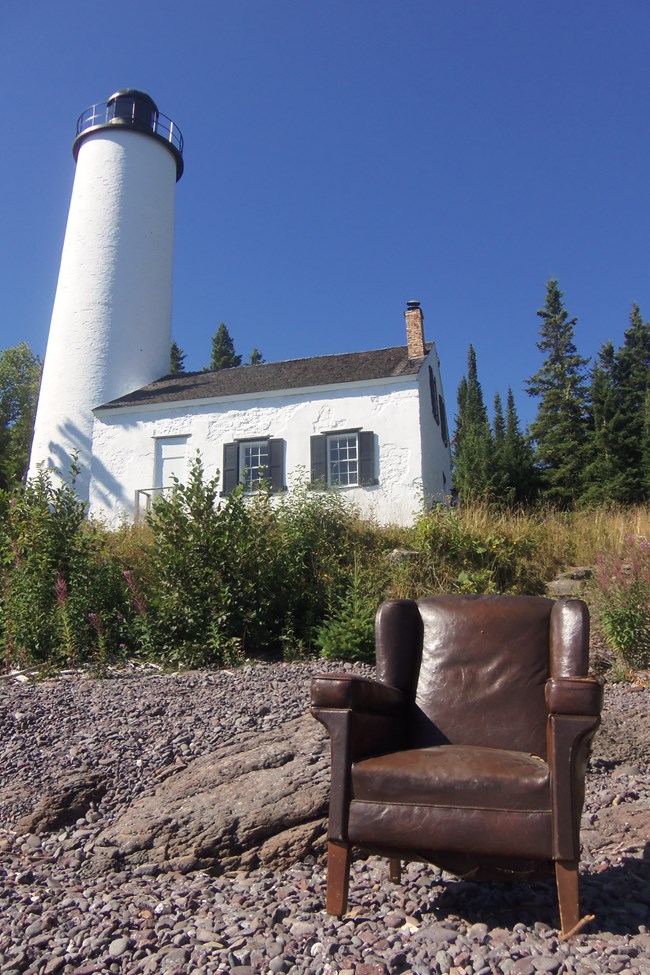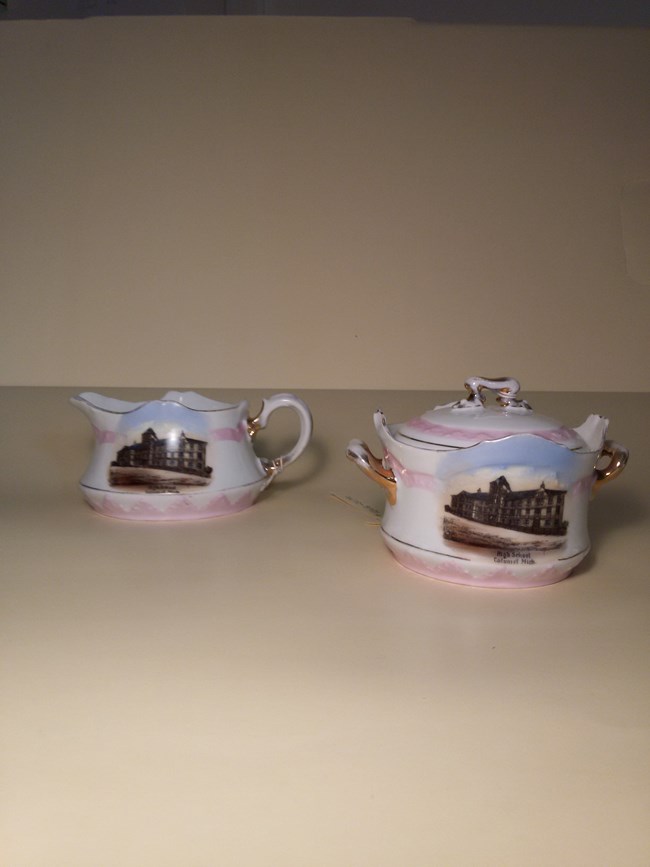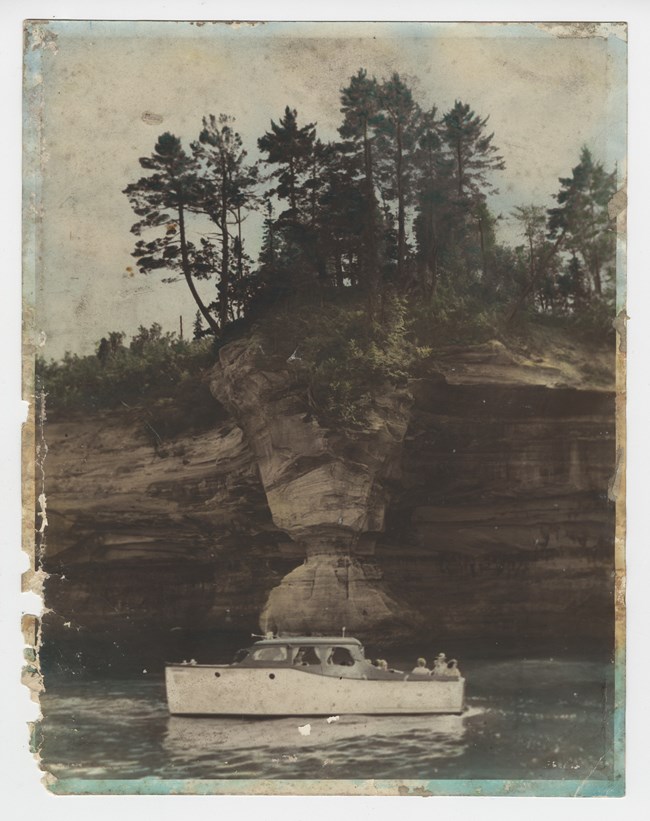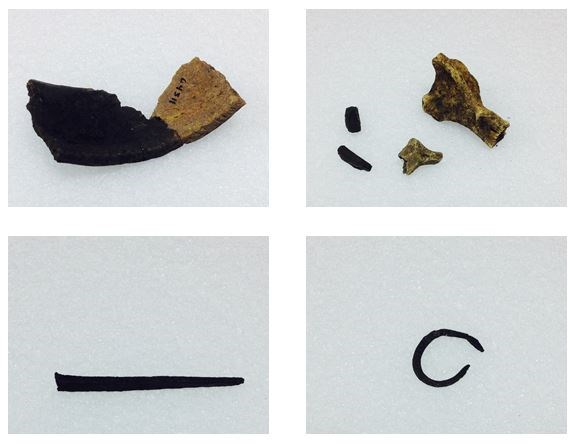
Collaboration Improves Collections Care, Despite Tight BudgetsLimited budgets are expected to characterize the federal fiscal climate for the foreseeable future; this is one reason the Lake Superior Collection Management Center (LSCMC) was established in 2013. The goal of the LSCMC is to leverage limited resources to provide the highest standard of care possible for the museum and archival collections of Isle Royale National Park, Keweenaw National Historical Park, and Pictured Rocks National Lakeshore.The LSCMC made great strides improving collections care for the three parks in 2016, even though funding hasn’t increased, and no additional staff has yet been brought on board to supplement the previously existing Keweenaw NHP museum and archival staff. In April of 2016, Pictured Rocks NL museum collections, including historic logging drays, shipwreck artifacts, and other items were moved from an historic barn at what once was the Abrahamson farm near Grand Marais to the LSCMC Houghton Musuem Storage Facility. In August, Isle Royale NP museum collections, including historic furniture, tools, and other items were moved from the second floor of the Rock Harbor Lighthouse to the mainland. The Isle Royale move was complex, and required the careful transfer of delicate antiques from the lighthouse either down the trail through the woods to the dock at the historic Edison Fishery, or by water on a skiff from the lighthouse beach to the fishery dock. From there, the furniture and other items were loaded onto small boats for transfer to Mott Island, where everything was loaded onto the Ranger III for transport to Houghton. If contracted, this move would have cost tens of thousands of dollars, but like the Pictured Rocks move, everything was successfully accomplished using NPS staff, equipment, and vessels, at a minimal marginal cost to the federal government. Museum collections moved in 2016 are now cared for according to professional museum standards in climate controlled facilities where they receive regular care and monitoring. There is still much work to be done to document collections and make them accessible. As staff or volunteers are available, museum records for Isle Royale and Pictured Rocks are being brought up to date, archival collections from all three parks are being processed, and museum objects from all three parks are being cataloged. Thanks to the collaborative work undertaken by the three parks and LSCMC staff in 2016, the collections are much less at risk from catastrophic loss and passive degradation due to sub-standard storage environments. 
Historic Souvenirs Acquired at Keweenaw National Historical ParkDrugstores and dimestores in towns and cities across the country once sold souvenirs depicting sights of interest to visitors and local residents alike, and the towns of the Copper Country were no exception.Some souvenirs were simple ruby glass or milk glass vessels bearing the name of a town, including Ahmeek, Calumet, and Hancock. Others were copper articles, including decorative figurines, pincushions, or letter openers. Copper souvenirs often included a small shield stamped with a local scene, such as a mine shaft-rockhouse. Other souvenirs, like these shown below, were porcelain dishes with color transfers of postcard images of buildings or landscapes. Although inexpensive at the time, people appreciated these souvenirs as reminders of the engineering marvels they had seen on a trip, or as a memento of their hometown. These items are now sought after by collectors, and though they were once quite common, they can be hard to come by today. This creamer and sugar bowl set once belonged to Mary Stalker Kennedy, who grew up on Rockland Street, and attended the Washington School, which was shown on each piece. The school was built by the Calumet and Hecla Mining Company (C&H) in 1875, and was once renowned as one of the best college preparatory schools in the country. Mary graduated from Calumet High School with the class of 1932, and worked for a time as a switchboard operator for C&H. This set was produced in Germany for the Estate of Edward Ryan. It was sold at Ryan’s department store on 5th Street in Red Jacket (Calumet) in the early 20th century. The set was donated to Keweenaw NHP by Mary’s daughter, Barbara Kennedy Vinocur. Donating to Lake Superior CMCThe national parks of Lake Superior were established to preserve and interpret nationally significant natural and cultural resources of the region.Some of these resources are too big to miss – including cliffs and forests, lakes and streams, lighthouses and shaft-rockhouses – but the NPS also preserves smaller-scale resources such as biological specimens, miners’ lunch pails, commercial fishing nets, historic business records, and family photographs. The National Park Service’s primary purpose in collecting nationally significant objects, specimens, and documents is to preserve them for posterity. These items are also available for research use, and contribute to educational exhibits, such as the Risk and Resilience exhibit at the Calumet Visitor Center. However, these secondary uses are always carefully managed so that the primary goal of preserving the museum objects and archives is not compromised. Many items in the collections were donated by current and former Upper Peninsula families who wished to see their own family history preserved, and others who wanted to contribute to the broader understanding of the history of these special places. The NPS is very grateful to donors for their foresighted generosity. Donating material to a professionally managed museum or archival repository will ensure that the donated items will be properly cared for in years to come. Professional repositories in the Upper Peninsula include the Central Upper Peninsula and Northern Michigan University Archives, found online at www.nmu.edu/archives/, Michigan Technological University Archives and Copper Country Historical Collections, found online at www.mtu.edu/library/archives/, Finlandia University Finnish American Heritage Center Archives and Museum, found online at finlandia.edu/FAHAM, and the Lake Superior Collection Management Center at Keweenaw National Historical Park, found online at www.nps.gov/kewe. Each institution has a different mission and policy for selecting material they will collect. Please contact them directly if you have any questions. If you are interested in donating material to the LSCMC, please contact Curator Brian Hoduski at (906) 483-3026 or brian_hoduski@nps.gov, or Archivist Jeremiah Mason at (906) 483-3032 or jeremiah_mason@nps.gov. 
Archival Collections Contribute to Exhibit and Resource Documentation at Pictured RocksThe Pictured Rocks National Lakshore archives contains park resource management records documenting the establishment of the park and its management over time. The archives also contains acquired historic materials documenting the resources of the park. These materials are now managed at the Lake Superior Collection Management Center in Calumet, where they are available to researchers.In 2016, historic photos from the Pictured Rocks archives contributed to presentations given by park superintendent Laura Rotegard to community groups and park stakeholders. Photos of tourists enjoying the wonders of the Pictured Rocks fifty and a hundred years ago resonate with people who enjoy visiting some of the same sites today. Similar photos were used in 2016 by Van Abel and Kronberg Design of Cheboygan, Michigan, for exhibits being developed by Pictured Rocks Cruises in an historic building in downtown Munising. In addition to photos documenting natural resources and historic tourism activities, the exhibits will also highlight historic photos of past activities in what later became the national lakeshore, including logging operations, fisheries, and maritime activities. The archives were used not only for interpretive and educational purposes at Pictured Rocks in 2016, but they also contributed to the in-depth documentation of the resources and history of Sand Point, near Munising. Pictured Rocks NL’s headquarters are located at an historic US Coast Guard lifesaving station at Sand Point. The station is being documented in an Historic Structure Report and a Cultural Landscape Report to be produced by Quinn Evans Architects of Ann Arbor, Michigan. These reports will not only document the history and existing condition of this cultural site, but also guide its management and preservaton for future generations. Doing Research at Lake Superior CMCArchival collections at the Lake Superior Collection Management Center include collections from Isle Royale National Park, Keweenaw National Historical Park, and Pictured Rocks National Lakeshore. Collections include National Park Service records, and acquired historic business records, organizational records, personal and family papers, and photographs. If you are interested in researching these collections, please contact the LSCMC archivist to make an appointment.The Lake Superior Collection Management Center Archives are located in the Keweenaw History Center, in the historic Calumet and Hecla Mining Company Public Library building at the southeast corner of Red Jacket Road and Mine Street in Calumet. Plans for the rehabilitation of the historic library building include changes to allow for universal accessibility. In the meantime, please notify center staff if you are not able to navigate stairs, and they will arrange accomodations for you in another building. If you are interested in doing family history research in the Keweenaw, the best place to start is Michigan Technological University Archives. Michigan Tech holds the majority of the records available from the Calumet and Hecla Mining Company and the Quincy Mining Company, including employment records. They also have the most complete run of Houghton County directories available in one location, in addition to many other collections. The Michigan Tech Archives are open Monday through Friday from 10AM to 5PM, and are located in the lower level of the J. R. Van Pelt and Opie Library on the Michigan Tech campus in Houghton. Walk-ins are welcome. Please visit the Michigan Tech Archives website at http://www.mtu.edu/library/archives/ for more information. For a guide to collections at Keweenaw NHP, researcher forms, and additional information, please visit the Keweenaw NHP website at http://www.nps.gov/kewe. Click on Learn About the Park, then on History and Culture, and then on Collections. 
From the Collections of Isle Royale National Park:The first comprehensive archaeological survey of Isle Royale National Park was undertaken by Tyler Bastian between 1960 and 1963. A graduate student at the University of Michigan, Bastian inventoried known sites, and identified previously unknown sites. The survey led Bastian to undertake more extensive excavation at some locations, such as the Minong Mine site.Over 20,000 archaeological specimens were recovered during these projects, including hammer stones, projectile points, lithics, copper implements, faunal remains, clay pipes, gunflints, Jesuit trade rings, and other material. The copper specimens compose one of the largest assortments of provenienced copper articles in the upper Great Lakes region, and include examples of all phases of tool production, as well as a suite of finished tools. The faunal remains include a multitude of mammal bones. Most notable among them are beaver and caribou bones, the latter having been extirpated on the island long ago. Most private collections typically preserve only the object, not the critical scientific data that accompanies it. Because they were collected professionally, the Bastian specimens provide a wealth of data for scholarly research, including that which enables scientists to accurately identify the age of the specimens. This supports research on the entire range of the human history of Isle Royale, from the Archaic period, to historic mining, to modern fisheries. |
Last updated: May 27, 2022
